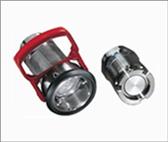
In pharmaceutical manufacturing, even microscopic contamination can lead to catastrophic consequences. The Dry Break Coupling technology represents a critical advancement in ensuring the integrity of fluid transfer operations throughout the production process. These specialised connectors prevent spillage during connection and disconnection, maintaining the sterility essential for pharmaceutical applications.
The implementation of Dry Break Coupling systems addresses several pressing challenges that plague pharmaceutical facilities. Cross-contamination between batches, exposure to ambient conditions, and operator safety concerns diminish when proper coupling technology comes into play. The mechanical precision of these systems creates a reliable barrier against external contaminants whilst ensuring zero-spillage transfer, a crucial requirement in environments where product purity directly impacts patient safety.
Contamination Prevention Mechanisms
The structural design of pharmaceutical-grade dry break connectors incorporates multiple contamination barriers. Flat-faced valve surfaces eliminate fluid entrapment areas that could harbour residue or microorganisms. Smooth internal passageways prevent turbulence that might generate particulates during transfer operations. This meticulous engineering approach creates a transfer system that maintains product integrity throughout the connection and disconnection sequence.
Regulatory Compliance Advantages
Pharmaceutical manufacturers operate under intense regulatory scrutiny. Dry Break coupling technology helps facilities meet stringent requirements from regulatory bodies through documented, validated transfer processes. The elimination of open transfers reduces environmental monitoring concerns whilst providing trackable connection procedures that align with good manufacturing practices. This alignment simplifies validation procedures and strengthens compliance documentation during regulatory inspections.
Sterile Processing Applications
Within aseptic processing environments, maintaining sterility presents persistent challenges for equipment designers. Dry Break couplings utilised in these settings incorporate features that support sterilisation processes including steam-in-place capability and materials compatible with gamma irradiation. The ability to sterilise these components without disassembly maintains system integrity whilst ensuring microbiological control throughout the production lifecycle.
Operator Safety Enhancements
Traditional connection methods often expose operators to hazardous pharmaceutical compounds including potent active pharmaceutical ingredients and toxic solvents. Dry Break technology creates a barrier between personnel and process fluids, dramatically reducing exposure risk. The elimination of open transfers protects both workers and products from contamination events, addressing both occupational safety concerns and product quality requirements simultaneously.
Critical Process Fluid Applications
High-purity water systems represent one crucial application area for dry break coupling technology. The transfer of Water for Injection (WFI) and other purified process fluids requires maintaining stringent quality attributes throughout distribution networks. Advanced coupling designs prevent biofilm formation through elimination of dead legs whilst supporting cleaning validation through smooth, crevice-free flow paths that resist microbial attachment and growth.
Sampling System Integration
Quality control procedures demand representative sampling from various process points. Dry Break sampling systems permit extraction of process fluids without compromising the integrity of closed systems. This capability supports process analytical technology initiatives by providing reliable, contamination-free access to process streams for testing. The assurance of sample integrity directly impacts quality decisions that determine product release or rejection.
Mobile Vessel Transfers
Pharmaceutical manufacturing often involves transfers between fixed systems and mobile vessels. These connection points present significant contamination risks when conventional connection methods are employed. Dry Break systems create sealed pathways between vessels and process equipment, maintaining closure throughout the transfer operation. This containment capability proves particularly valuable when handling sensitive biological materials or potent compounds requiring strict exposure controls.
The implementation of dry break coupling technology throughout pharmaceutical fluid handling systems addresses multiple critical concerns simultaneously. From contamination prevention and regulatory compliance to operator safety and process integrity, these specialised connectors deliver measurable benefits across various applications. For pharmaceutical manufacturers seeking to enhance production quality whilst reducing process risks, evaluation of current transfer methods against dry break alternatives reveals significant opportunities for improvement in both efficiency and compliance outcomes.


Leave a Reply